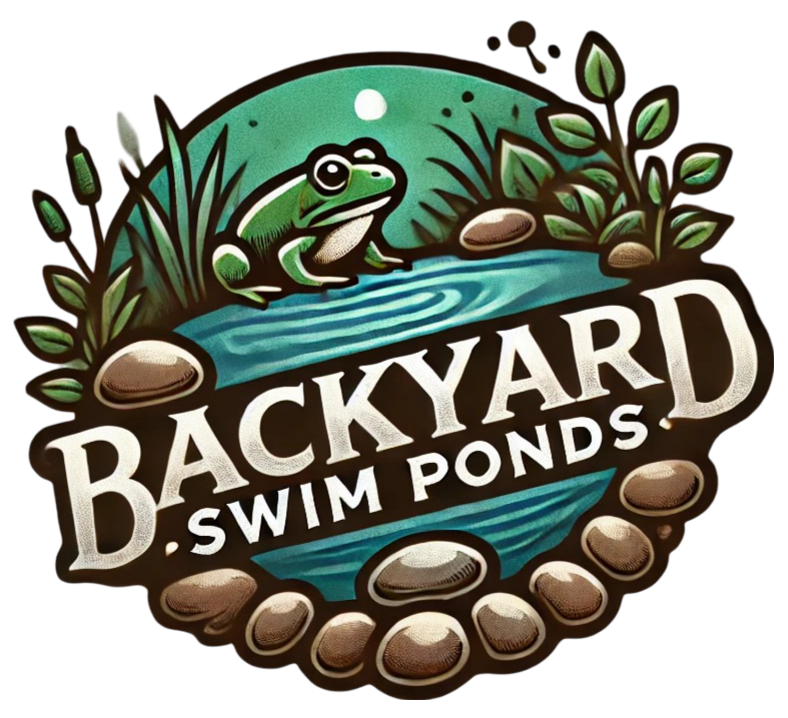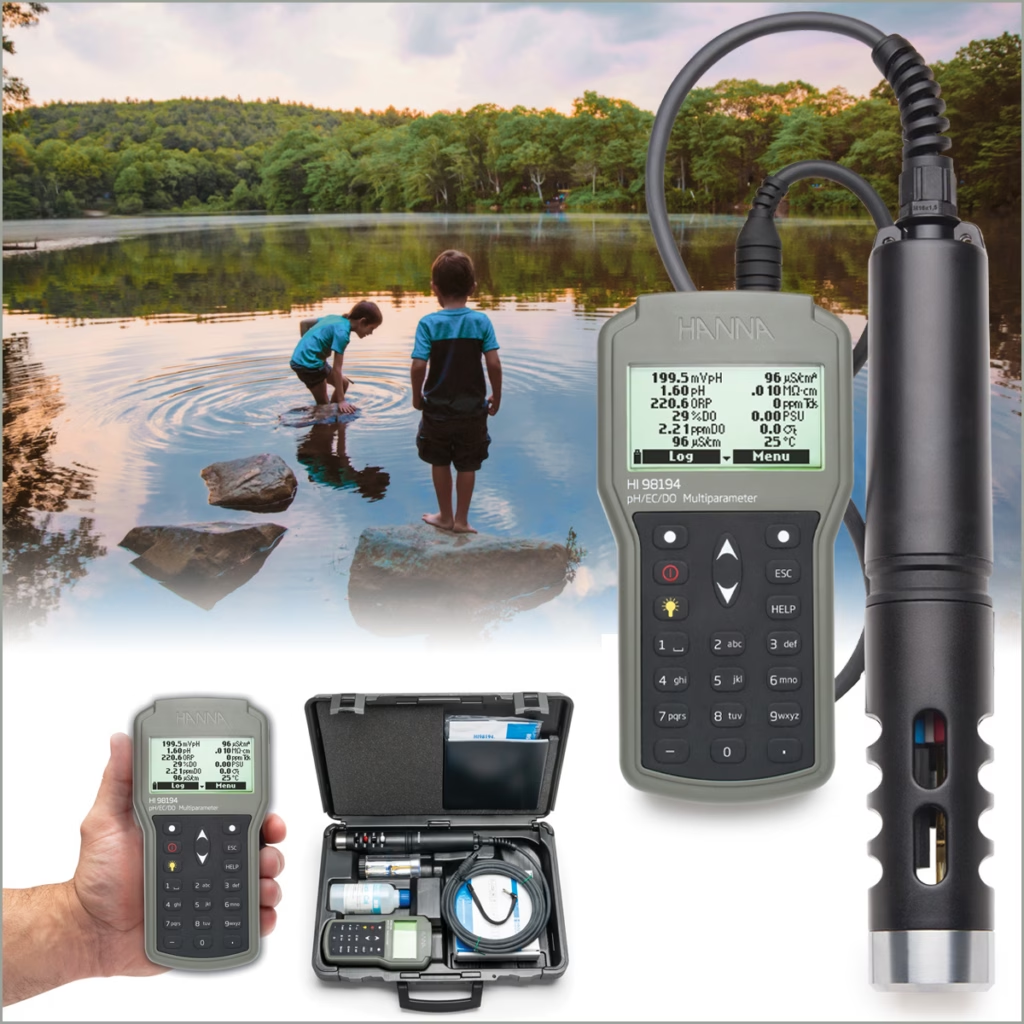Have you considered turning your existing pond into a refreshing swim space? As natural swimming ponds grow in popularity, many environmental enthusiasts and garden owners are looking into this eco-friendly alternative to traditional pools. Not only do these ponds serve as beautiful places for swimming and relaxation, but they also promote biodiversity and support local wildlife. This guide will take you through the essential steps to convert your pond, focusing on safety, costs, regulations, and how to maintain water quality naturally.
Each aspect of converting your pond deserves careful thought. You may find yourself asking questions like, “How can I ensure safe swimming in my pond?” and “What costs should I expect?” Let’s explore what you need to create your swim-ready oasis.
Is Your Pond Ready for a Swim? Assessing Safety for Swimmers
Before making any modifications for swimming, ensuring the safety of your pond is crucial. Here are the main factors to consider:
-
Evaluate Current Water Quality: It’s important to test your pond water before swimming. Key parameters to check include coliform bacteria and E. coli, as these can pose health risks. Regular monitoring of dissolved oxygen levels is also essential since it supports aquatic life.
-
Check Water Temperature: Ideally, swimming temperatures should range between 70°F and 78°F (21°C – 26°C). Knowing the temperature helps you find the best times for swimming and determine when to enhance aeration.
-
Assess Visibility and Depth: Clear visibility in your pond is vital. If you can’t see the bottom, it may indicate suspended particles or algae blooms. Ensure that the swimming area is at least 4 feet deep to allow safe navigation for swimmers.
Visualizing Water Quality Equipment
Water quality testing equipment used to evaluate swimming safety in ponds (Source: Hanna Instruments).
By considering these safety factors, you can ensure that your pond is suitable for swimming while supporting the health of local aquatic life.
Transforming Your Pond: Understanding Costs and Budgeting
Understanding the financial implications of converting a pond is essential for overall budgeting. While it might be tempting to think that modifying an existing pond will be cheaper than building a new one from scratch, this is often misleading.
-
Conversion Costs: Converting an existing pond typically costs between $50,000 and $80,000. This price includes installing filtration systems, landscaping adjustments, and making structural modifications.
-
Factors Affecting Costs: Several factors influence the overall cost, such as the need to reshape the pond, install a robust filtration system, and create separate swimming and regeneration zones.
-
Cost Comparison: Generally, building a new natural swimming pond costs between $60,000 and $80,000 for a standard size, which can sometimes be similar to or lower than conversion costs.
Visualizing Cost Implications
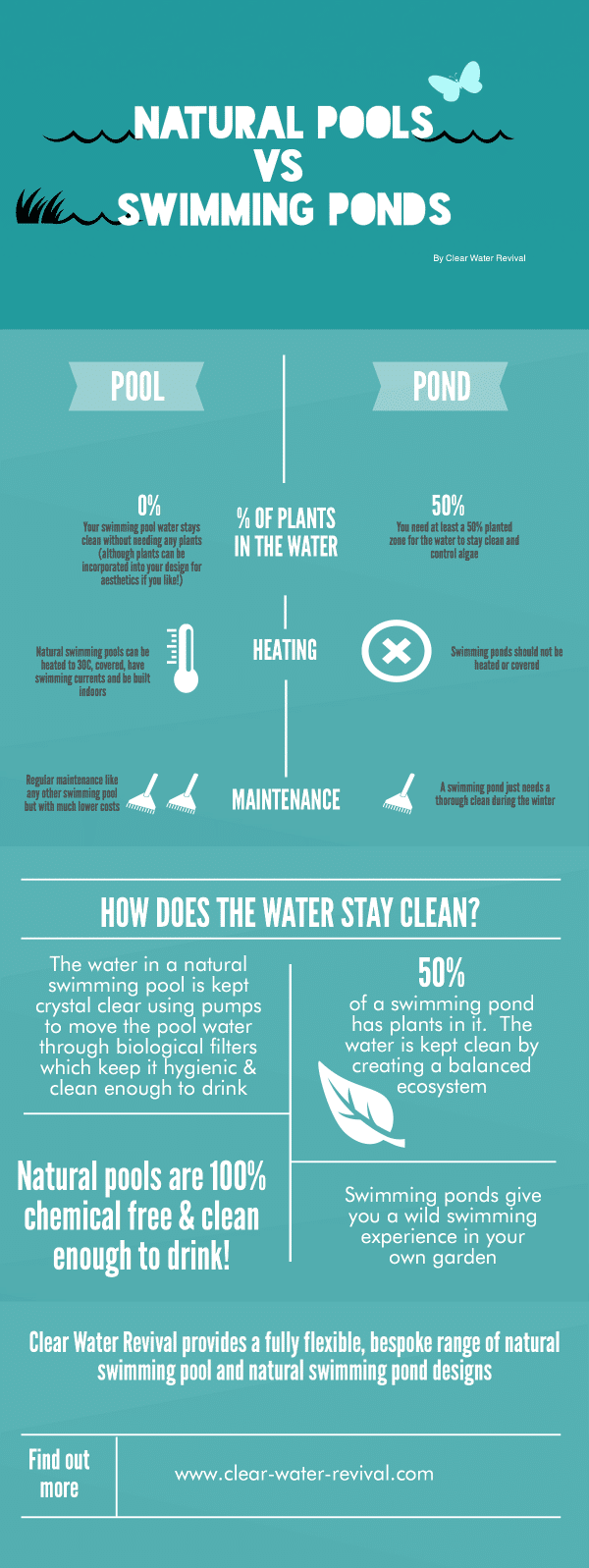
Cost comparison between natural swimming pools and traditional ponds (Source: Elemental Green).
Taking the time to understand these costs can assist you in planning a realistic budget for your pond conversion project.
Local Rules and Regulations: What You Need to Know
Understanding local regulations and permits is key when converting your pond for swimming. The rules governing pond conversions may vary depending on your location, so here’s what you need to consider:
-
Permit Requirements: Most modifications to existing ponds require multiple permits, which can include environmental assessments. Be prepared for the regulatory process, which may take several months.
-
Zoning Regulations: Local zoning laws may dictate what modifications are permissible for your pond. For instance, safety fencing is often required for pools deeper than 4 feet.
-
State-Specific Rules: Some states enforce stricter regulations for natural swimming ponds. It is advisable to consult with local authorities or county planning offices to clarify what is required in your area.
Understanding Local Regulations
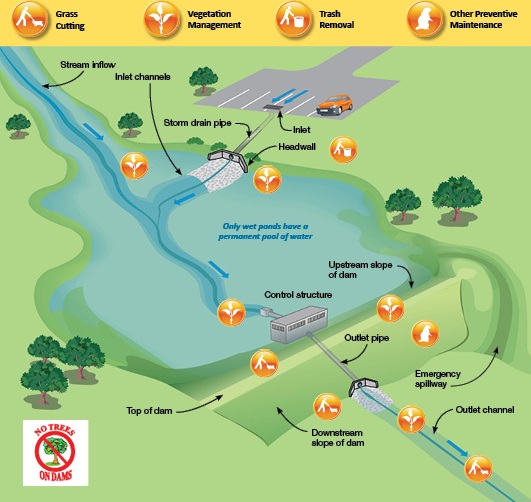
Regulatory map depicting local pond management laws (Source: Montgomery County).
Being informed about local regulations helps you avoid potential legal issues and ensures compliance throughout your conversion process.
Creating Balance: Will Your Pond Affect Local Wildlife?
Converting your pond can significantly impact local wildlife. To create a positive ecosystem, you should incorporate strategies that maintain a balance between swimming areas and natural habitats.
-
Design for Diverse Habitats: Implement various depths and natural features in your pond design to promote a wide range of habitats that encourage different wildlife species.
-
Introduce Wildlife-Friendly Features: Adding floating islands with native plants can foster local wildlife while helping filter and purify the water.
-
Maintain a Balanced Ecosystem: Experts recommend keeping a consistent balance between swimming and regeneration areas—ideally a 50-50 split—to support both aquatic life and swimming.
Visualizing Effective Pond Conversion
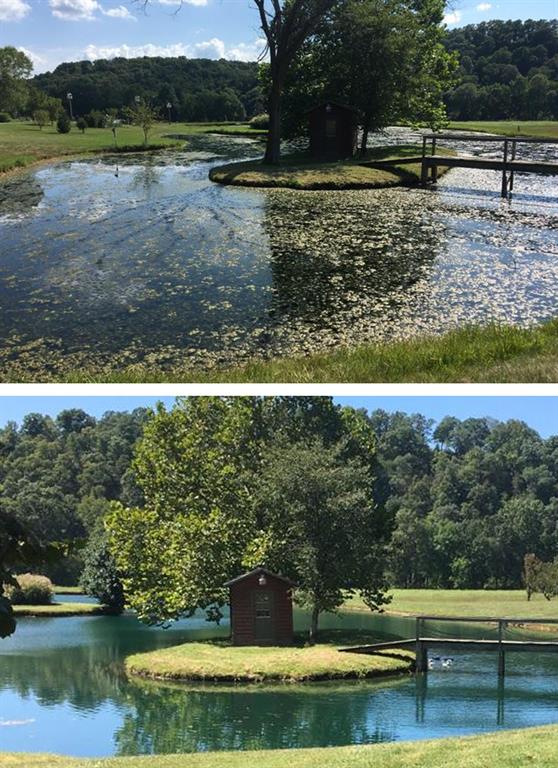
Image showing before and after photos of a pond conversion (Source: Sanco Industries).
By focusing on creating a balanced environment, you can enjoy an attractive swimming area while supporting local ecosystems.
Natural Water Quality Solutions: Maintaining a Clean Swim Pond
To ensure a healthy swimming experience, maintaining excellent water quality is essential. Here are some natural methods for achieving this:
-
Implement Suitable Filtration Systems: A reliable biological filtration system combined with mechanical filtration is vital for maintaining water quality in natural swimming ponds. Wetland filtration systems are particularly effective.
-
Choose Appropriate Aquatic Plants: Selecting native plants for your pond enhances its beauty while helping to maintain clean water. These plants can provide natural filtration and serve as habitats for aquatic life.
-
Establish Regular Maintenance Routines: Regularly monitoring water quality is critical. Schedule annual cleanings and create a routine for checking clarity and circulation to prevent stagnation.
Visualizing Filtration Practices

Infographic illustrating a natural water filtration system for ponds (Source: Shopify).
Effective water quality management not only enhances the swimming experience but also maintains a healthy habitat for aquatic life.
Algae Control Without Chemicals: Sustainable Practices
Keeping algae growth in check is vital for maintaining water quality in your swim pond. Here are some sustainable practices to consider:
-
Utilize Beneficial Microorganisms: Introducing organisms like Daphnia, which naturally feed on algae, can significantly reduce algae populations in your pond.
-
Implement Natural Filtration and Aeration: Installing natural filtration systems and using pumps or fountains to aerate the water can improve oxygen levels and reduce the risk of algae blooms.
-
Maintain Aquatic Plant Levels: Keeping a robust population of aquatic plants helps control algae naturally. Regular monitoring and maintenance are essential to ensure the health of these plants.
Visualizing Sustainable Practices
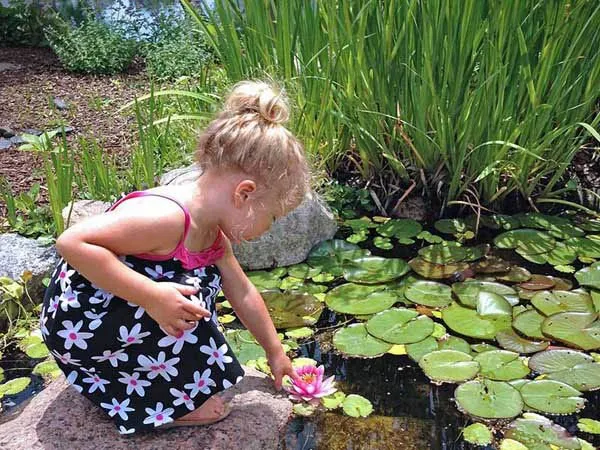
Image showcasing healthy aquatic plants in a pond (Source: Premier Pond).
By focusing on sustainable algal control methods, you can create a cleaner and healthier pond environment without relying on harsh chemicals.
Engaging Experts: Case Studies and Success Stories
Learning from others can greatly enhance your pond conversion process. Case studies and first-hand accounts provide valuable insights and inspiration for your project.
-
Highlight Successful Conversions: Homeowners have shared their experiences of pond conversions, detailing improvements in aesthetics, watering quality, and overall satisfaction.
-
Discuss Aesthetic and Ecological Benefits: Well-designed pond conversions can elevate property value while positively impacting the local ecosystem, promoting biodiversity.
-
Include Testimonials: Real-life accounts from homeowners who have undergone similar transformations can help instill confidence and provide practical examples.
Visualizing Success Stories

Image depicting a transformed natural swimming pond (Source: Mother Earth News).
Reviewing case studies can offer motivation and practical tips to guide you through your pond conversion journey.
Your Pond Itinerary: Steps to Create Your Swim-Ready Oasis
Finally, having a structured itinerary can be invaluable for your pond conversion. Here’s a step-by-step approach to keep you on track:
-
Create a Timeline of Tasks: Identify key tasks such as assessment, design, construction, and ongoing maintenance so you can prioritize effectively.
-
Include Safety and Maintenance Protocols: Establish clear guidelines for safe swimming, including regular monitoring of water quality and routine maintenance tasks.
-
Set a Clear Goal and Budget Framework: Define your project goals and track expenses accurately to ensure you stay within budget.
Visualizing Pond Conversion Timelines

Graphic illustrating a timeline for pond conversion (Source: BigCommerce).
Following a structured plan can help make your conversion process smoother and more enjoyable, ensuring you maximize the benefits of your pond.
Conclusion
Converting your existing pond into a swim-ready oasis is a fulfilling project that requires thoughtful consideration and planning. From ensuring safety through water quality assessments to understanding costs and navigating local regulations, each step brings you closer to creating a beautiful natural swimming environment.
By prioritizing sustainable practices, fostering a balanced ecosystem, and learning from others’ experiences, you can successfully transform your pond. Embrace your journey toward enhancing your property while supporting local biodiversity. Whether you find joy swimming in your rejuvenated space or simply relishing the natural beauty, you will contribute positively to your local environment—one pond at a time.
As you stand at the edge of your pond, take that first step toward making your swimming oasis a reality!
